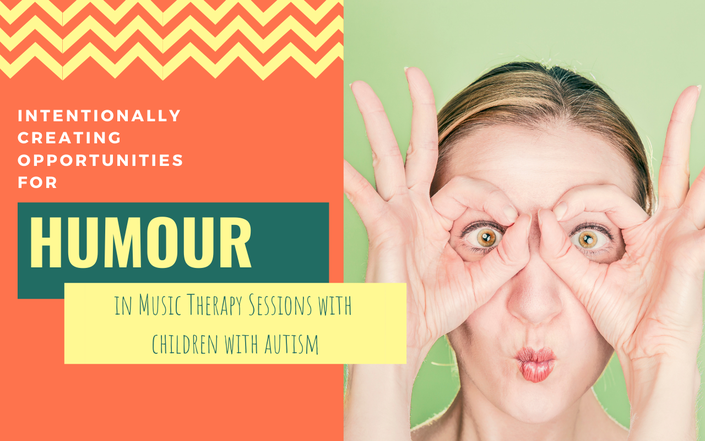
Intentionally creating opportunities for humour in music therapy sessions for children with autism
Make it fun!
Transforming Sessions with Ann Lehman-Kuit & Janet Andrews
Looking to bring more joy and connection to your work with children on the autism spectrum? Whether you're seeking fresh engagement strategies or wanting to move beyond traditional approaches, this dynamic and experiential tutorial from Ann Lehman-Kuit & Janet Andrews offers practical tools to transform your sessions—and your clients' experiences.
Ann & Janet, experienced clinicians and educators with years of special school practice, present an inspiring exploration of humor's therapeutic power. They begin with the foundational understanding of how humor builds connection, reduces anxiety, and creates safe spaces for growth in children with autism.
You'll learn:
- The most effective props and visual techniques for encouraging laughter and engagement
- A variety of facilitation strategies, including surprise elements, exaggeration, and creative song adaptations
- How to use slapstick, incongruity, and playful elements to make your sessions more expressive, engaging, and therapeutic
- Strategies to enhance social connection, support communication goals, and help children feel confident to take risks
- Techniques for creating an environment where "nothing is wrong and everything is welcome"
This tutorial is ideal for music therapists who are looking to deepen their impact with children on the autism spectrum, integrate more creative possibilities into sessions, or build confidence in using humor as a therapeutic tool.
It also includes comprehensive video examples from special school settings and practical demonstrations of each technique in action, showing you exactly how these strategies work.
Whether you're looking to reduce session anxiety or take your therapeutic connections to the next level, this tutorial will inspire new ways to use humor with purpose, sensitivity, and profound therapeutic impact.
Bonus activities and curated resources are included to extend your learning and offer opportunities to earn CMTE/CPD credits.

Janet has a Bachelor of Music Education and for the last 35 years has specialised in early childhood music education, after working intensively with Richard Gill during her initial degree and in London. Janet is the Coordinator of the long running early childhood music education "ChiME" program at the Wollongong Conservatorium of Music, having developed and taught a number of programs there.
Janet has also lectured for the ECE degree at the University of Wollongong for over 10 years, she has a Masters Of Creative Music Therapy, receiving the Deans Medal for her studies. She has been working with children on the autism spectrum for many years, as a teacher and a music therapist and has just started working with Sing&Grow in the Illawarra. Janet also runs a community choir, loves to dance and plays drums in the street band "Les Femmes Fatales".

Ann Lehmann-Kuit (RMT) is a registered music therapist, teacher, performer and event organiser. She is an engaging facilitator and has a passion for connecting through music and inspiring children and adults to become empowered, flexible and creative musicians. Ann has gained a Master of Creative Music Therapy (with Distinction). She is a casual lecturer in the Masters of Creative Music Therapy Course at WSU and the UOW music undergraduate degree.
Get started now!

Earn 4+ CMTE/CPD credits quickly and easily!

Course Curriculum
-
Preview1. Introduction, overview & learning outcomes (3:02)
-
Start2. Why Humour? Reducing anxiety and rehearsing coping with the unexpected (8:23)
-
Start3. Designing songs & activities: Lyric substitution (13:28)
-
Start4. Designing songs & activities: Movement (4:46)
-
Start5. Designing songs & activities: Incongruity and exaggeration (10:54)
-
Start6. Music Techniques - Elements of surprise and fun (4:20)
-
Start7. Useful props and ideas (4:33)
-
Start8. Summary & Bonus Content (6:05)

Frequently Asked Questions
Get started now!
| For MT-BC’s in the US and Canada you can submit your certificate in the workshops/independant learning category as an ‘other continuing education opportunity’. You can use the following CBMT Domains when you submit your CMTE certificate. |
| CBMT DOMAINS |
| I SAFETY |
| 2. 3. 5. 10 |
| II REFERRAL, AX, INTERPRETATION OF ASSESSMENT AND TREATMENT PLANNING |
| D Treatment Planning - 2 a. B. c. 10. 11. 12. 13. 14. |
| III TREATMENT IMPLEMENTATION AND DOCUMENTATION |
| A Implementation -1 a. B. c. d. E. g. 2 a. b. g. h. k. l. m. p. w. y. bb. ff. hh. kk. tt. uu. vv. ww. xx. yy. zz. aaa. fff. ggg. |
| 5. C. d. e. g. I. j. k. l. m. n. o. p. r. t. u. v. y. eb. cc. ee. hh. |
| V PROFESSIONAL DEVELOPMENT AND RESPONSIBILITIES |
| A Professional Development - 1. 2. 3. 6. |

